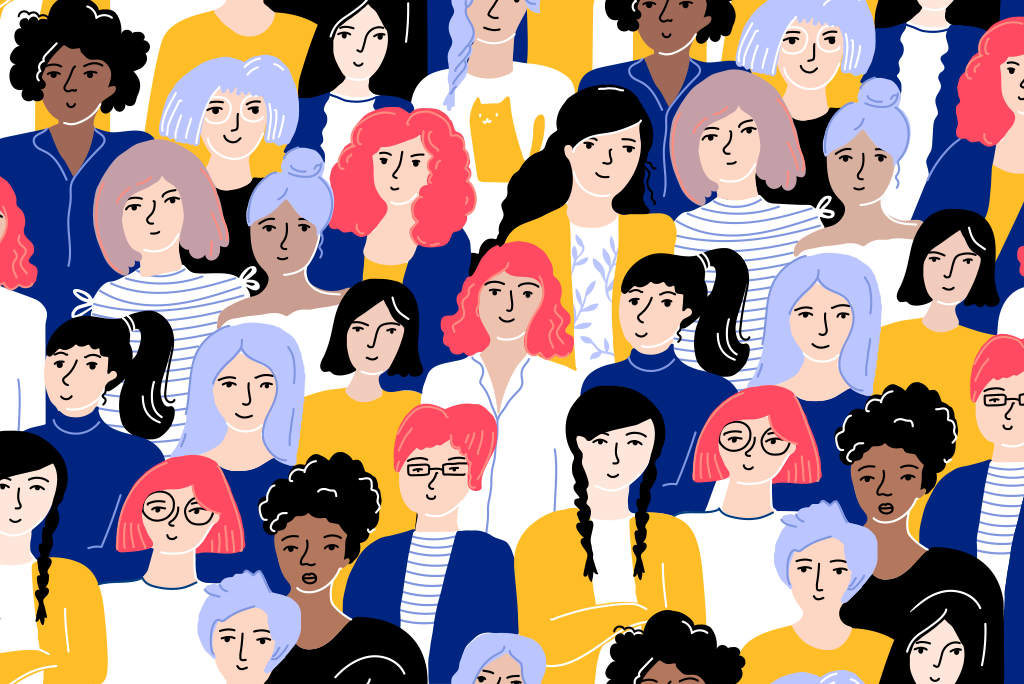Science and technology is a dynamic field that is constantly evolving and growing, but in one aspect it seems to remain stagnant and that is the gender disparity that exists to this day. Even today, only one in three scientists (33 percent) are women, as reported by a UNESCO Science Report 2021. This not only does lasting damage to women in the short term but also hinders the development of societies, innovation, and more, in the long term.
Let us explore why women are so underrepresented in science, technology, engineering, and mathematics (STEM) disciplines. The low engagement of girls and women in science can be attributed to myriad reasons, such as the gender stereotype that has existed for generations in households and educational institutions which mandates that boys are better suited for science and more likely to succeed in STEM-based occupations.
This belief also leads to people believing that since STEM careers are highly male-dominated areas, they are not an appropriate area or career path for women to enter or work in. Cultural attitudes like the ideology that investing in a boy’s education rather than a girl’s education would be more beneficial and give higher returns, is also another reason why girls systemically lose out on the opportunity to study.

The consequences of these stereotypes and cultural attitudes are dire, as they withhold the growing economic opportunities that are being generated due to the increase of digitised economies, from women. It also leads to harmful technology like algorithms that discriminate against women searching for jobs.
They deny girls the basic right to education, as Article 21-A and the Right of Children to Free and Compulsory Education (RTE) Act which came into effect on 1st April 2010 stipulate. These Acts provide ‘free and compulsory’ education for all children between the age of six and fourteen years, making it a Fundamental Right. The current ruling dispensation started a women empowerment campaign named “Beti Bachao Beti Padhao” in 2015 to address the education of girls.
A contemporary way to strive for gender parity would be through digital technology. Digital technology can reduce gender gap through increasing access to welfare services, financial services, identification and information. Women can access grants and loans more easily if they attempt to secure them through digital transfer, as they can avoid social norms that may act as barriers such as the attitude shared by many households that a man should control a woman’s finances. Evading this empowers women financially
However, it was clear from the ads that were being distributed that the message of misogyny rather than equality was being propagated. The ad “Kaise khaoge unke haath ki rotiya, jab paida hone nahi doge betiyan” translates to “How will you eat the bread of their hands, when you will not allow daughters to be born”. The ad seems to be advocating for traditional gender roles, rather than the prevention of female foeticide and facilitation of equality for girls and women.
The approach taken by Mexico that proves to be promising is to provide secondary school students as well as their parents with information, regarding the huge demand for STEM-based jobs and the monetary pay for the same. When they are in possession of this information, concerns around whether such a career is suitable for a woman, tend to evaporate.
A study by the National Assessments and Benchmarking of Gender, Science, Technology and Innovation assessed the level of support, opportunities, and participation of women in science across different countries in the world like the European Union, the U.S.A, Brazil, South Africa, India, Korea and Indonesia. The study found that there is an inequality in opportunity, as women have less access to resources like education, technology, financing and more, and this ultimately affects their employability.
Also read: The Matilda Effect: When Women In STEM Are Sidelined Due To Gender Bias

The World Economic Forum finds that women working in science and technology are less likely to access funding as compared to men. It is also reported by the Harvard Business Review that start-ups led by women received just 2.3 percent of venture capital, as of 2020. The study also records that women from countries that treat them as second-class citizens and view them to be of low social status, consequently have to face disadvantages from the beginning of their lives and tend to have insufficient health care.
The study further elaborates that even when women take programs in science and technology, around 30 percent are said to drop out due to a lack of flexibility for work hours and child care. Sophia Huyer, says, “Women have greater parity in countries with government policies that support childcare, equal pay, flexible work, and gender mainstreaming.”
Having parity between men and women in STEM-based fields would be beneficial to everyone. As according to the European Institute of Gender Equality, reducing the gender gap that exists in STEM would lead to a rise in employment by 850,000 in the E.U by 2050. A study by the International Monetary Fund found that women bring novel skills to the workplace; that not only increases economic benefits for all, but also raises male wages
Such changes could help attain equality in opportunity and representation. The economies were ranked for gender equality, the study took into account health, social and economic status, access to resources and opportunity; societal policies such as childcare, equal pay, flexible work hours; and participation in decision making. Considering all these factors, India ranked the lowest. This result can be attributed to women’s low educational and social status within the country.
A contemporary way to strive for gender parity would be through digital technology. Digital technology can reduce the gender gap through increasing access to welfare services, financial services, identification, and information. Women can access grants and loans more easily if they attempt to secure them through digital transfer, as they can avoid social norms that may act as barriers such as the attitude shared by many households that a man should control a woman’s finances. Evading this empowers women financially.

Identification is also a route to attain more independence as the possession of a government recognised document which allows a woman to access financial services, fight for their legal rights and claim mandates promised by the government for their children or themselves.
Social media can also be a medium to better human rights through technology. Many social movements such as MeToo, HeForShe and the like, have had significant and far reaching effects for everybody. Cyber-feminsit forums are able to mobilise people across the globe using various digital platforms to address the intersectional, complex and varying feminist agendas that shed light on the plight of women and ingenious ways to tackle and solve systemic gender bias.
Digital activism has its benefits such as being swift, cheap and breaking down barricades and increasing accessibility to powerful and influential individuals. However, the promotion of free speech often comes with unwelcome hate speech such as prejudiced, divisive language, victim blaming and more.
Having parity between men and women in STEM-based fields would be beneficial to everyone. As according to the European Institute of Gender Equality, reducing the gender gap that exists in STEM would lead to a rise in employment by 850,000 in the E.U by 2050. A study by the International Monetary Fund found that women bring novel skills to the workplace; that not only increases economic benefits for all, but also raises male wages.
Also read: Mansplaining In Classrooms: The Systemic Coercion Of Women Into Silence And Self-Doubt
Featured Image Source: Hindustan Times
About the author(s)
Naureen is currently a student of Political Economy at King’s College London. As a student Naureen has had the opportunity to write on a plethora of topics, and do in-depth case studies on the correlation between economy and democracy. Naureen is always open to political discussion and constantly on the lookout for new perspectives. She has acted as the Head Curator for TEDxYouth@VSA and as a Deputy Content Writer for VidyashilpXDesi. Her current roles include being the writer and print designer for her university paper: ‘Roar'. Literature is a passion for Naureen and she hopes to keep writing.




